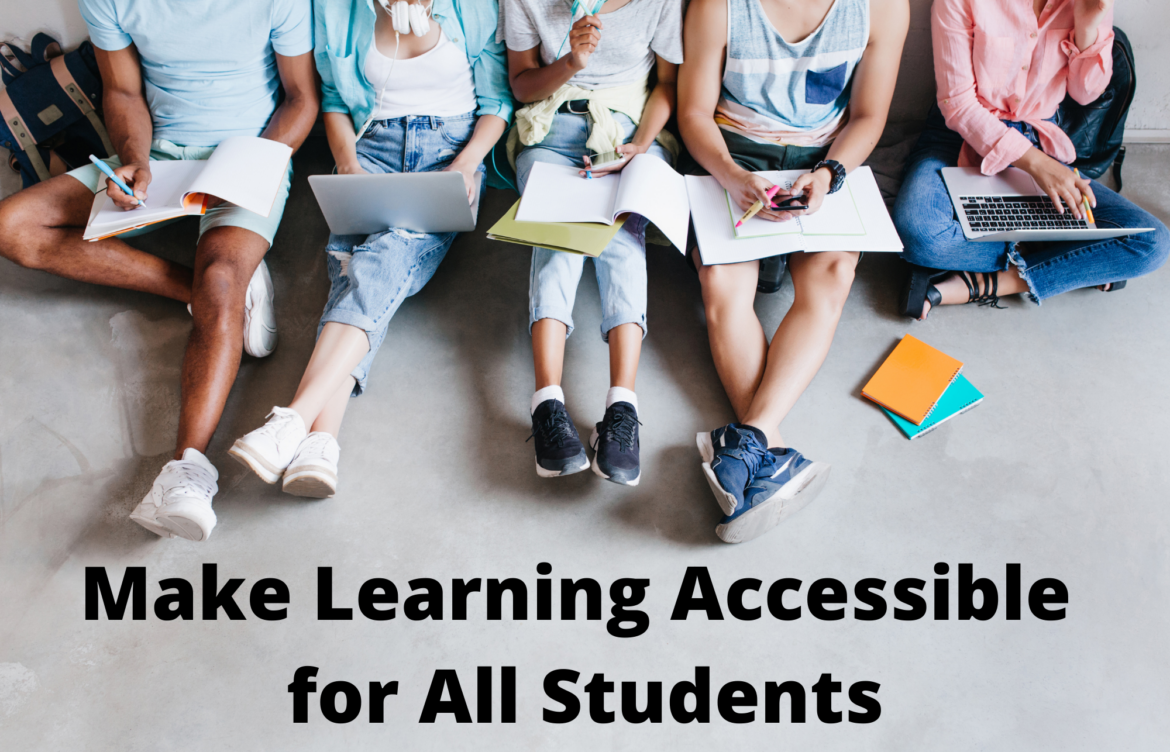School is underway and you are probably busy once again! You juggle a hectic school schedule along with family activities while trying to maintain some semblance of sanity. To assist you, we have some clarification and ideas to help with your teaching. In this post, we’ll be identifying several critical terms that all educators should know. We will also share a few ideas and strategies to help you with them. Additionally, just to make the reading more fun, we have a quiz for you down below to check how well you know the difference between accommodations, modifications, and interventions. You may also have some ideas that we didn’t include, so please scroll down to the comment section and share them with our audience!
Accommodation
An accommodation is a change in the environment, curriculum format, or equipment. Students use accommodation to gain access to the content and to complete the work or meet expectations. Though the format of the curriculum might be altered, the curriculum or content itself is not. As a result, the work expectation and skill acquisition of the student with the accommodation is the same as other students who do not have accommodation. In essence, the adaptation lies in how the information is presented, how the student demonstrates mastery, the learning environment, expectations regarding time, scheduling, or utilizing strategies to assist with organization.
Here are a few examples of common accommodations:
- Respond orally instead of writing the response on paper (response accommodation)
- Use large-text print version of text (presentation accommodation)
- Have instructions read aloud (presentation accommodation)
- Allow the student to sit where he/she feels they learn best (setting accommodation)
- Extended time for task or testing (time accommodation)
- Take a test over several shorter periods and possibly over several days (scheduling accommodation)
- Use a timer to help with time management (organization accommodation)
- Take the test in a small group setting (setting accommodation)
- Use a calculator, dictionary, or word processor (response accommodation)
- Get an outline of a lesson (presentation accommodation)
Modification
On the other hand, modifications do not address how the student learns, but what the student learns. In this case, modifications to the curriculum or assignments are in place so that the student is not expected to learn the same material. For example, students who are not able to understand all of the content or concepts being taught should have modifications. As a result, assessments may cover less material or have fewer questions. The student is still expected to learn and demonstrate mastery, but the content is changed according to the plan designed for that particular child. In addition, the child can have curriculum modifications, assignment modifications, or both.
Here are a few examples of common modifications:
- Different questions on a text are given to a student (assignment modification).
- Different/alternative projects are assigned (assignment modification).
- A different grading scale is used to assess the student (curriculum modification).
- The student learns different content than other students, possibly from another grade level (curriculum modification).
Accommodations are for ALL students. Modifications are only for those with an Individualized Education Program.
Intervention
An intervention is a strategy that is implemented for a student to learn a new skill or concept that he may be struggling with. The purpose of the intervention is for the student to master the expected skill or concept taught to the class. As a result, interventions help students make progress towards the expectations or standards. They utilize assessment, planning, and monitoring of student progress.
Some interventions may include:
- A student is provided time/access to a state-approved reading fluency program to improve decoding skills.
- One student attends an afterschool (or Saturday) session to learn helpful math strategies for solving division problems.
- A student participates in a small group for 30 minutes, twice a week, to improve reading comprehension skills
- Particular students receive instruction in study skills so they can better learn the content and master academic goals.
Scenarios and a Quiz
Below are several scenarios. After reading each one, decide if it is detailing an accommodation, modification, or intervention. Last but not least, check your answer! If you’re on a laptop or desktop, hover your mouse over the top left corner of the “?” icon to the left of each scenario to see the answer.

Mrs. Miller is a fourth grade reading teacher. They are starting to read “Wonder” by R. J. Palacio. To help one particular student, Jackson, Mrs. Miller has allowed him to listen to the book on tape instead of reading the book like his peers.

Mr. Moore seems to be the favorite teacher of all his tenth grade students. He enjoys teaching chemistry and makes learning fun. He has three students in fifth period that get a shortened version of the test for each chapter. Instead of 25 questions like all the other students recieve, these few students have only ten questions.

Ms. Williams teaches eighth grade science. They are about to do a unit on light and sound waves and how they interact with different materials. Each year, her students say this is their favorite unit. She anticipates that even Irene, who has a different grading scale than her peers, will enjoy this unit.

Professor Jones teaches at the community college. He also teaches a dual credit class for the local high school. Fortunately, he is a master at teaching accounting to both college and high school students. Last week, he noticed that some of his students struggled when applying auditing concepts to evaluate the conformity of financial statements. He was able to pull those students aside and review Auditing Standard No. 15 with them. This was a standard they should have learned about in a prerequisite course.

Dr. Taylor is the principal at Crockett Junior High. As she was doing a walkthrough, she noticed that one of the students wasn’t able to finish an assignment within the class period. Dr. Taylor noted that the student had the same assignment as the other students. She suggested that the teacher provide extra time for the student to finish the assignment.
Suggest Helpful Accommodations, Modifications, and Interventions

What are some accommodations, modifications, and interventions that you have found helpful with your students? We would love for you to share with us, but be sure to use a fake name for your student(s). Also, if you have a great website to share that lists strategies and ways to accommodate, modify, and intervene, our readers would appreciate you sharing it. Just jump to the comment section below and pay it forward.
Find other TechNotes posts on accommodation, modification, and intervention here.
Header image attribution: People photo created by lookstudio – www.freepik.com


6 comments
This is great information. It’s important to remember that accomodations, modifications, and interventions are not only for struggling learners, but also for the G/T learners. And some gifted learners need these on both ends if they are 2E. The G/T kids may need accelerated options, extended learning options, etc. along with extended time to process and such.
Great point, Shari. Thanks for highlighting that.
Why is this website not fully accessible? You also missed talking about digital accessibility — which makes content more accessible for all students — aka accommodation in your discussion.
Greetings, Raymond. I’ll pass along to our webmaster about our website not being fully accessible. Thanks for pointing out digital accessibility. The article wasn’t meant to be exhaustive but hopefully to start a discussion…like this 🙂 My apologies if that was the tone.
Totally agree with Raymond. Accommodation, modification, and intervention don’t work unless the base content and the tools used to interact with them are accessible. I work with students with visual impairments content accessibility must be remediated before we can begin accommodation/modification/intervention strategies.
This is really informative information!! Thanks for sharing this!!